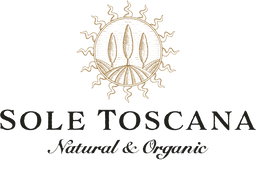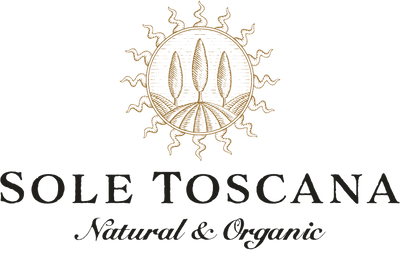There are countless options when it comes to tools for cleaning the body- washcloths, sponges, electronic face brushes, etc. This could leave you confused about what to use on your body and face.
Let's talk sponges
Many people love sponges for their skin routines because they are versatile in their uses and forms. We hope our detailed review will help you make an informed decision on what sponge to choose.
The traditional loofah
WHAT IS IT?
The loofah (luffa) is a tropical vine plant in the gourd family. Did you know that the part used as a sponge is a large elongated fruit that is edible?
When the loofah matures and dries, farmers peel off the outer skin and extract the dried fibrous interior (sponge).
PROS AND CONS
Due to their construction, loofahs promote the growth of bacteria. Replace your sponge every three to six weeks to avoid infections. Also, be careful when using loofahs to exfoliate. They can cause skin inflammation and irritation if you use them too frequently.
On the positive side, loofahs are affordable. You can readily purchase them in shops or grow them at home if you have a garden.
These sponges are environmentally friendly- you can turn them into compost once you finish using them.
HOW TO USE
Before using a loofah, dip it in water to soften it. Bear in mind that the temperature and amount of water can affect the loofah's scrubbing ability. Warmer water makes the loofah softer, but if you want it coarse, gradually add cold water.
Apply your soap and scrub in circular motions. Be gentle on the delicate parts of your body, like the underarms, face, and feminine areas.
HOW TO MAINTAIN AND STORE
When you're done showering, rinse the sponge thoroughly. Make sure no soap remains in the loofah. Store it in a place that allows it to dry completely.
Loofahs can withstand washing in hot water when you do your laundry. You can also boil them for up to 5 minutes.
The natural sea sponge
WHAT IS IT?
Sea sponges are living ocean organisms. Some of the common types include the honeycomb sponge, silk sponge, and wool sponge.
PROS AND CONS
Each sponge species offers a different exfoliating experience. These sponges need intense cleaning to avoid clogging your pores with the old skin cells remaining on the sponge. If you have sensitive skin, this sponge might be too abrasive for you.
Sea sponges are a natural, renewable resource that decreases waste. They don't contain any harmful chemicals, are easy to clean, and last for many years if you take good care of them.

HOW TO USE IT
These sponges are usually hard when new. Saturate the sponge with water and soap. Squeeze the soap into the sponge several times, then rinse until the water turns clear. Then add soap to the sponge and gently rub your face in a circular motion.
HOW TO MAINTAIN AND STORE
After using, rinse your sponge thoroughly with warm water until the water runs clear. Squeeze out the excess water and place it somewhere it will dry naturally.
To clean this sponge, soak it in a mixture of 1 cup of warm water and 1 ½ tablespoons of baking soda (for small sponges). Use a larger ratio for large sponges.
Also, you can soak it in a mixture of 1 cup of water and ¼ cup of hydrogen peroxide. We recommend that you clean it every two weeks.
The natural cellulose sponge
WHAT IS IT?
Vegetable pulp and natural fibers like cotton are used to create cellulose sponges.
PROS AND CONS
These sponges are a bit harder to clean than other types, as they tend to retain residue. They also deteriorate rapidly if too much bacteria remains in the sponge. If you have trouble cleaning it, we recommend you throw it away to avoid infections. The good thing is, these sponges are biodegradable.
Cellulose sponges are soft, elastic, and smooth when wet.
HOW TO USE IT
Soak your sponge with water until it expands to its full size. Add your cleanser then apply it to your face in gentle circular motions.
HOW TO CLEAN, MAINTAIN AND STORE
Thoroughly rinse your sponge until the water runs clear. Store in a dry place.
Once a week, sterilize the sponge by submerging in boiling water for 3 – 5 minutes. Allow it to cool then squeeze out the excess water.
The konjac sponge
WHAT IS IT?
The Konjac is a Japanese sponge made from vegetable fibers from the konjac (elephant yam) plant. It is 100% natural and extremely gentle on the face, making it perfect for sensitive skin. It contains various vitamins and minerals that nourish the skin.
PROS AND CONS
Even though this sponge can last up to 3 months, it's recommended that you replace it every 4-6 weeks. Its gentle nature makes it unsuitable for exfoliating.
There are diverse types of these sponges, and each color signifies a different infusion of an active ingredient. For instance, a green sponge has green tea.
HOW TO USE IT
Soak the sponge for 5 to 10 minutes until it softens and expands. Soak it for twenty minutes if it is new.
Squeeze out the excess water, add your favorite facial cleanser and gently cleanse your face using circular motions.
HOW TO CLEAN, STORE AND MAINTAIN
Rinse your sponge in warm, running water. Press the sponge gently between your palms to remove excess water. Avoid squeezing or twisting the sponge, as it can be easily damaged.
Hang the sponge to dry in an area with limited moisture. You can also store it in a sealed container in the fridge between uses.
Sterilize the sponge often to minimize bacteria buildup. Soak it in extremely hot (but not boiling) water for five minutes. Allow it to cool before removing the excess water. Allow it to air dry.
With love,
The Sole Toscana Beauty Team


